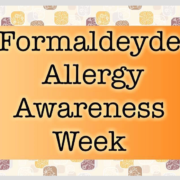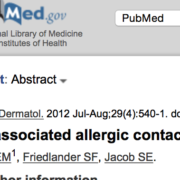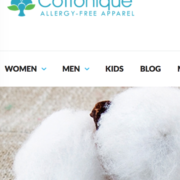Formaldehyde exposure
On Formaldehyde exposure …formaldehyde is an important irritant and allergen. Irritants disrupt the skin and permit increased absorption of allergens… “Formaldehyde is the simplest of the aldehydes (HCHO). It is a gas at room temperature. It is obtainable in crystalline form or as a liquid. … There are two major sources of formaldehyde: direct commercial manufacture and indirect production. Commercial formaldehyde is used mainly in the synthesis of disinfectants, cosmetics, deodorants, paper, dyes, photographic materials, textiles, inks, wood products, synthetic resins, preservatives, leather, fertilizers, and insecticides. Indirect production of formaldehyde may occur through the photochemical oxidation of airborne hydrocarbons from vehicle exhausts, the incomplete combustion of hydrocarbons in fuels, and other sources. Other sources in the atmosphere include cigarette smoking levels over 0.2 ppm have been observed and anaerobic decomposition of methane by microbes.”
…
“Studies to evaluate formaldehyde sensitivity have been done by several investigators over the past 80 years, starting in 1909. In the 1909 study, subjects developed stomach or intestinal pains, headaches, and itchy rashes on the chest and thigh after drinking milk that contained formaldehyde.” Formaldehyde exposure has been studied for more than 80 years!!!
“The concentration of formaldehyde for inhalation provocation testing in our studies was <0.2 ppm. This is lower than the perceptible odor level of 1 ppm noted by NIOSH.” Formaldehyde exposure needs to be further studied!
“In 1981, the Committee on Toxicology of the National Research Council estimated that as much as 10% of the total United States population may be hypersensitive to the irritant effects of formaldehyde.” Formaldehyde exposure and the clinical effects from this need to be documented!
The above quotes are from the article from Pan et al. for more information please read:
Yaqin Pan et al. Formaldehyde Sensitivity Clinical Ecology VI(3):79-84 http://www.aehf.com/articles/A44.htm
This week the Dermatitis Academy has led out a campaign for awareness on formaldehyde allergy. Please visit our dedicated formaldehyde allergy page:https://www.dermatitisacademy.com/formaldehyde/



